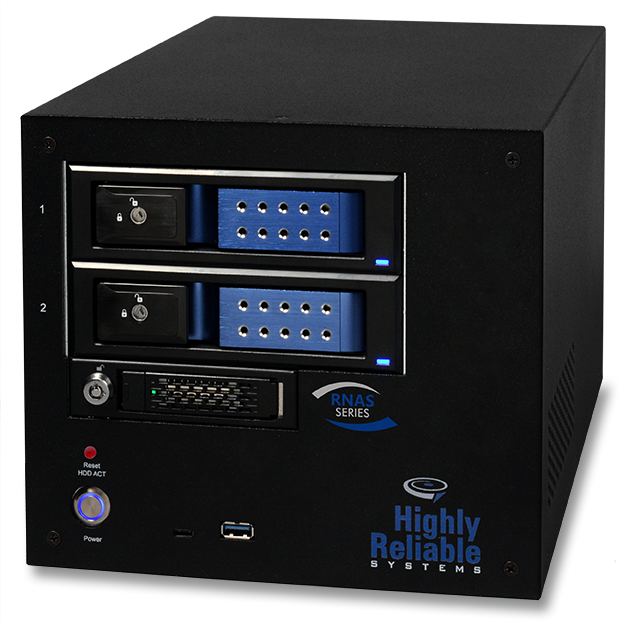5 Elements of a Backup and Disaster Recovery Appliance (BDR)
Rather than buying a BDR with high monthly fees and storage costs, you can use our hardware to build your own. Many of our backup NAS appliances can be used as a platform to create a Backup and Disaster Recovery (BDR) box. This is typically configured as a Local to Local to Cloud backup configuration. After the backup is sent to the local appliance, it is uploaded to the cloud to protect against on-site disasters.
The elements of a BDR may include:
- A network attached storage appliance to backup local servers to. In addition, if you want the ability to run an emergency server in an outage, the appliance you choose should have sufficient software, CPU, and RAM to run virtual machines. Virtualization is what differentiates a “backup appliance” or “backup NAS” from a true BDR box.
- Third party backup software, preferably image based should be chosen and installed. Many good choices are available. market leading software and vendors who know backup the best. Some of software that can be used on our network appliances include: StorageCraft, VEEAM, Arcserve, Acronis, Paragon, Others. We typically don’t include backup software but do include mirroring and replication software. This allows you the flexibility of rolling your own BDR with best of breed software and support.
- Cloud upload capability – Either use third party backup software or a program like High-Sync to upload data to the cloud for protection against local disasters.
- A storage cloud that supports large image based backup. When choosing a cloud provider consider the ability to consolidate incremental images in the cloud. Some backup vendors such as Storage Craft provide their own cloud. Some cloud services also allow you to “spin up” virtual machines in the cloud, allowing you to use the cloud server resources as your emergency server. This type of service typically comes at a premium but is an alternative to running locally if fire, flood, thefts or other disasters occur that prevent the default location from being used.
- Technical support and services. The combination of a High-Rely dynamic support contract, along with backup software vendor support gives you the ability to get help when you need it.


